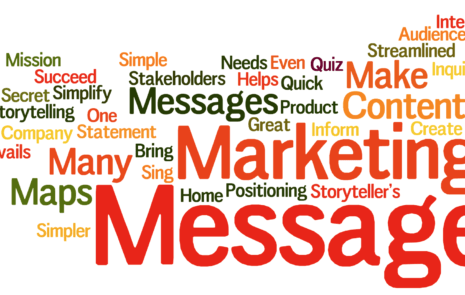
Marketers, always be teaching buyers and customers
To win at content marketing, always be teaching (ABT)
In Glengarry Glen Ross, a sales manager Blake (Alec Baldwin) teaches the lesson: ABC, always be closing.
But the hard sell techniques that Blake taught work with fewer and fewer customers. What’s changed? Customers, not sales, are now in charge of the buyer’s journey.
That’s why marketers need to focus on content and: ABT, always be teaching.
Great content marketing succeeds by teaching customers exactly what they need to know to achieve the success they seek.
Marketers, help buyers win by teaching 4 specific lessons through content:
1. Teach buyers how to recognize unanticipated problems and needs
Buyers begin in one of three states:
- Unaware that they have a problem or need
- Aware that they have a problem, but unsure how to address it
- Aware that they have a problem or need, and ready to go on a buyer’s journey.
When buyers are unaware of their problem or need, marketers must create content that helps buyers discover their unknown problem.

For example, people who need an insurance policy or a retirement plan may or may not be aware of their need. Even if they’re aware of their need, they may or may not know where and when to begin.
When buyers are unaware of a problem, marketers can make a huge difference with the right content:
- To bring a problem to light, ask insightful questions that help customers recognize symptoms of larger problems they may not recognize.
- Share stories about customers who discovered and addressed an unknown problem before it was too late.
- For business to business buyers, forecast trends that will affect their industries and companies over the next few years. For example, Tellabs commissioned an industry analyst study that showed cellular providers how their business models would turn unprofitable in just 90 weeks. Consider: what impacts could big data, artificial intelligence and predictive analytics have on your customers’ businesses in the next 3 to 5 years?
Job one for marketers is to help buyers see the problems and needs they already have but don’t know about … and teach them how to address these problems. Always be teaching!
2. Teach buyers which questions to ask, how to compare and evaluate options
Do your buyers know the right questions to ask as they seek the best solution? On large or infrequent purchases, the answer is often No.

First-time buyers especially need to learn what are the right questions to ask sellers. That’s true when consumers choose a house, car or retirement plan – and when businesses purchase a building, IT infrastructure or capital equipment.
As you teach buyers, implant key questions in their minds that help them evaluate options. Teach new buyers to ask the questions that go well beyond, What’s the price?
Teach buyers to ask great questions:
- Are there hidden costs?
- What kinds of problems do customers have with this product, and how do they address those problems?
- How do products or service compare?
- Which product has the longest service life, lowest operating cost, fastest throughput, best performance, best service, and best guarantee?
- What do existing customers have to say?
- How do users get the most out of their purchase?
3. Teach buyers how to reduce risk with social proof
Having heard from the sellers early in the buyer’s journey, buyers seek to narrow their options by turning to third parties for assurance. This is when customers need to see reviews, ratings and rankings hear from people like themselves.

Systematically gather social proof for your website. Make third-party endorsements easy to see. Sprinkle social proof throughout your website, rather than bunching it up on one page that customers may or may not find.
At this stage in a buyer’s journey, news, social media posts, ratings, reviews and testimonials come to the fore. Embed news, blogs and videos into your website.
Show customers’ rankings and reviews verbatim. Authentic videos of real customers can help close the sale.
Once customers buy, you have a great opportunity to turn them into repeat customers with content that teaches by addressing users’ questions and needs.
4. Teach users how to get the most out of their purchases

Offer videos, drawings and other content to help users get the most out of new purchases. Don’t count on people to read a user’s manual!
Instead, find ways to minimize the friction of learning to use a new product:
- Monitor verbatim user questions that come in via social, chat and phone – and offer answers in the form of one question and answer per web page.
- Create a space for users to share tips and tricks.
- If customers buy your product for one application, show them additional applications that make the product ever more useful.
- Monitor social media for customers’ service needs. Head off customers broadcasting all the ugly details of their problems by inviting them to switch to email or phone so you can resolve problems one customer at a time.
If it’s logical in the eyes of users, offer content that cross-sells and upsells add-on products, services or extended warranties.
ABT! Always be teaching with content marketing
As you do so, you’ll earn the reputation of being the helpful company in your market, the kind of company that customers want a long-term relationship with.
Enough said!





